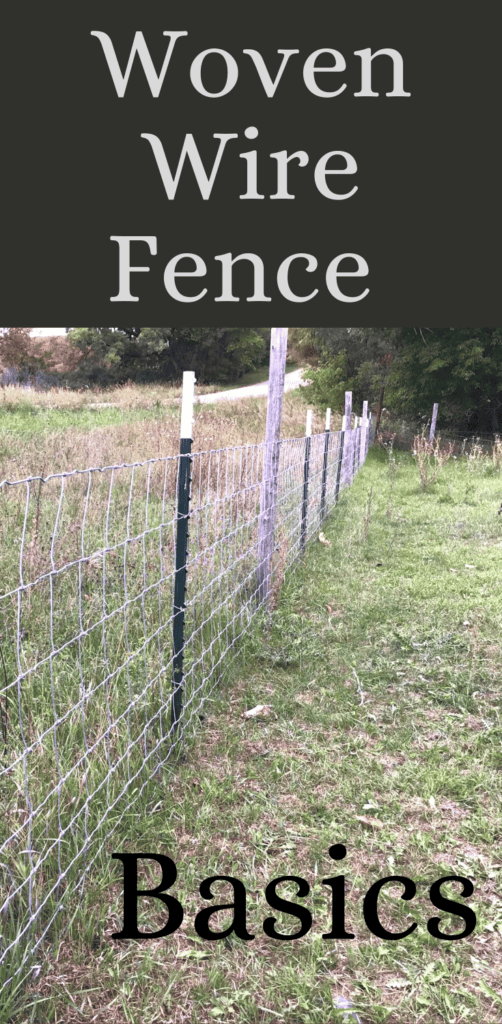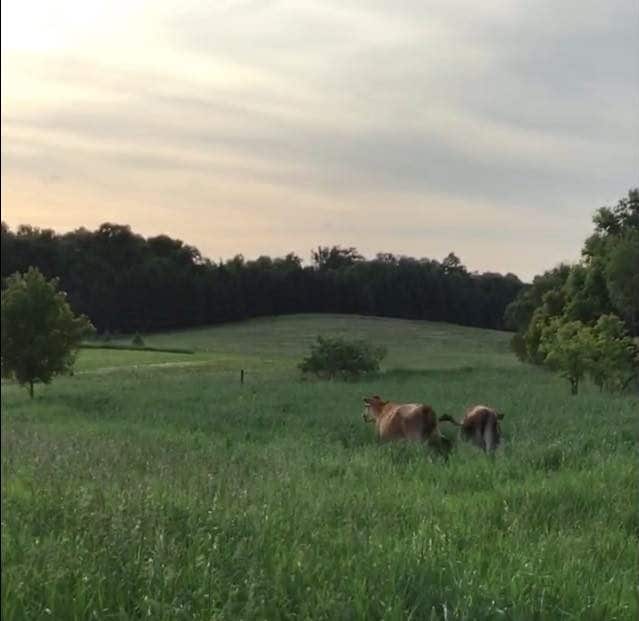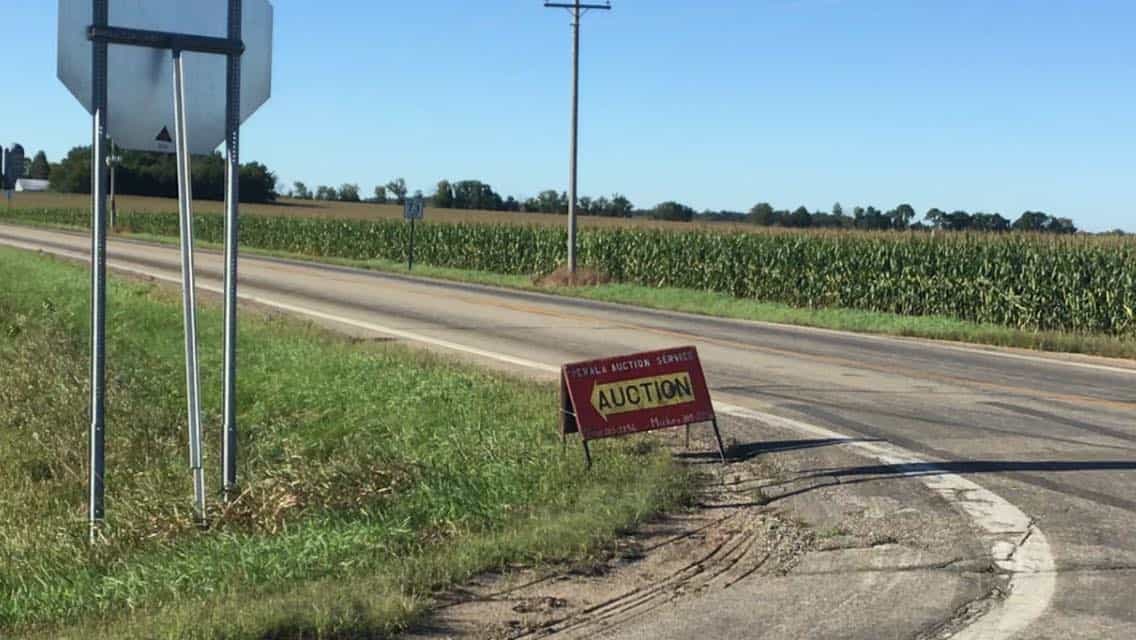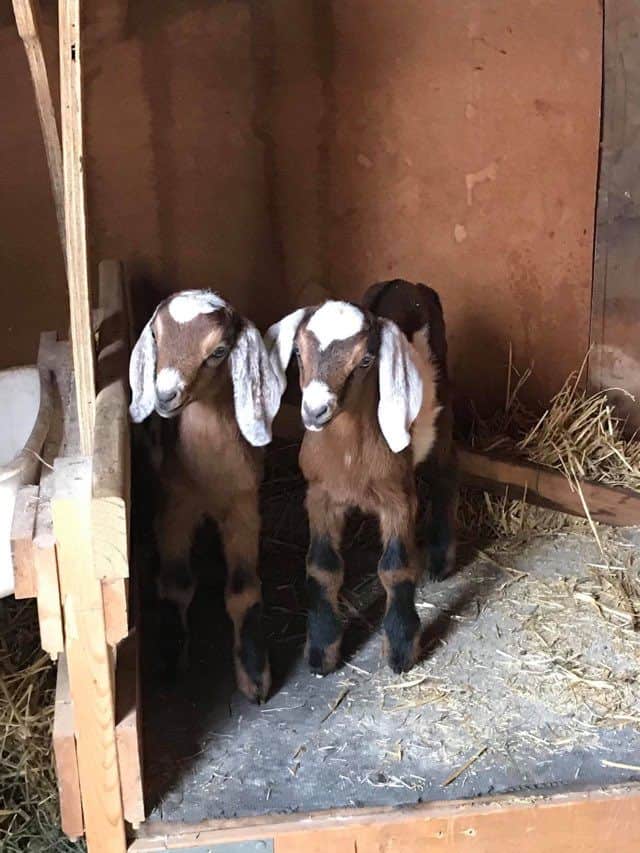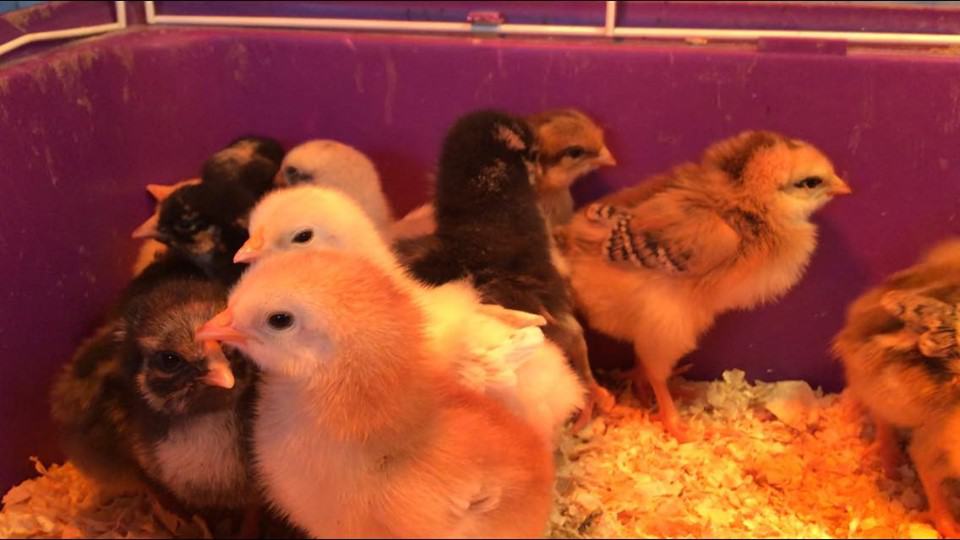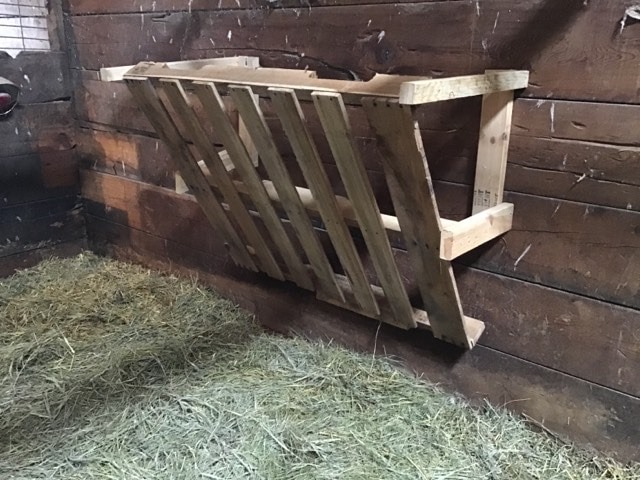Woven Wire Fencing Basics
We recently tackled a huge fencing project on the homestead. Most of my experience in the past has been with high tensile and electric fencing. Here’s everything I learned about woven wire fencing basics.
Choosing the Correct Fence
When we first purchased woven wire fencing we made some mistakes.
First, in a quick fix effort to keep some difficult sheep in one area, I bought a simple woven fence in the garden supply section because it was cheap and looked to me like it would do the job. It did. For a few weeks.
This type of garden fencing simply isn’t made of thick enough wire to keep livestock in.
You want to buy a woven wire field fence from a Fleet Supply store.
The next thing you want to consider is the height. We made a mistake here too the first time, buying 36 inch fence. This worked, again, temporarily, but any time our hot wire across the top shorted out the goats would sail right over it.
In the end we got 48 inch woven wire fence that is topped with a line of electric.
They make even higher woven wire fence that is typically marketed towards horses.
Whatever wire you go with, do a little research as to what height will work best for your animal.
Maybe you just have pygmy goats. Then you can probably get away with a shorter height.
Do you have cows? Those jerks will smoosh woven wire down with their big heavy heads and necks if you don’t have electric wire to run across the top OR the fencing goes higher than they can swing their necks.
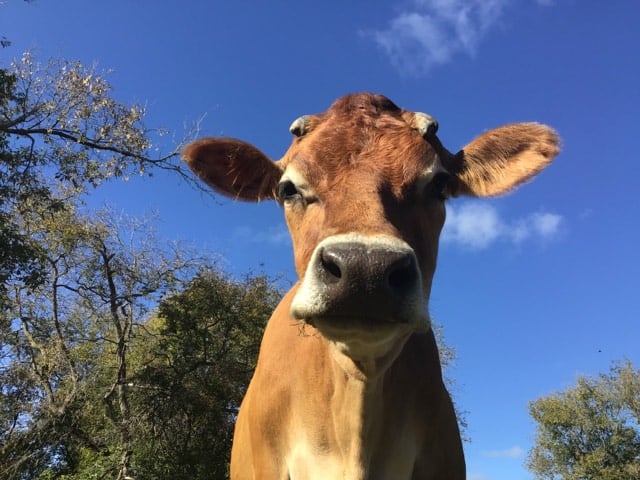
Moving Woven Wire
Woven wire is HEAVY. In order to move it around your fencing area I highly recommend having a tractor or rigging it up in the back of a pickup.
Tools for Installing Woven Wire Fencing
When it comes to woven wire fencing basics, having the right tools on hand when you start the project will make your life a million times easier.
Two Solid Metal Bars
This will be used to run through the spool of woven wire and then either hung from forks of a tractor or braced in the back of a pick up for the wire to unspool from. Think of it as a very sturdy paper towel holder.
Make sure it is about a foot longer than your wire on either side/will fit in the back of your truck bed.
The second bar will be used to evenly pull your fencing taught.
Come Along or Tractor
Woven wire needs to be pulled very taught in order for it to be effective. If you are unspooling your wire from a tractor (or possibly a pickup) you will place an additional bar at the end of your wire and pull on the bar to create a taught fence line. Check out the video below to see us doing that with a tractor.
A Come Along is another tool that can be used to pull the fencing taught.
Fencing Pliers or Wire Snippers
Good solid fencing pliers or wire snippers are a must to clip the end of your fencing off the roll. The top and bottom wires are especially thick so it will need to be a solid pair of snips.
Regular Pliers
When attaching the wire to t-posts you’ll be using wire clips. These are put into place using a pair of pliers.
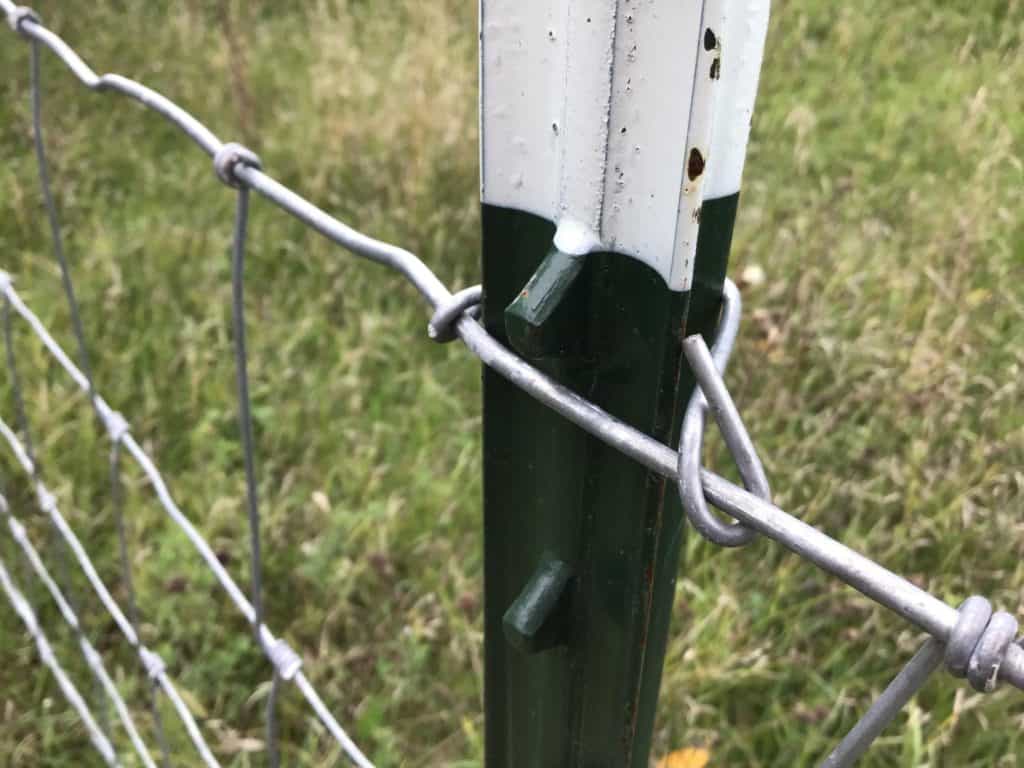
Measuring Tape or Stick
As you set your fence it is a good idea to have a measuring tape or stick for spacing. We spaced out our posts about every five feet.
T-Post Pounder
Pretty self explanatory.
Supplies for Woven Wire Fencing
T-Posts
The size will again depend on what type of animal you are fencing. For goats and cows I wouldn’t go any shorter than a six foot post. Right now as of early fall 2021, a six foot t-post will run you about five bucks.
Decide on how far you want your post placement, then pace out your fence line to determine how many you’ll need. I would buy five more on top of that, just to be safe.
Wire Clips
For our height of woven wire, we used four clips per T-Post. We used six foot posts and 48 inch wire. If you have a shorter wire height you can probably get away with three clips.
The clips come in bags of 50-200 and aren’t that expensive. They are a little putsy as they all get tangled up in the bag. You also want to make sure you don’t leave any in the pasture where they can end up getting swallowed by a cow or wedged in a hoof.
Woven Wire
Woven wire will be the most expensive part of your project and also the heaviest. These rolls come in various lengths. Ours was about 360 feet and definitely are a two person job to haul around. The height of woven wire you want will depend on what kind of animal you are fencing and if you are adding electric to the top.
Fencing Staples
You’ll need staples if you include any wood posts in your fence or have wood corner posts.
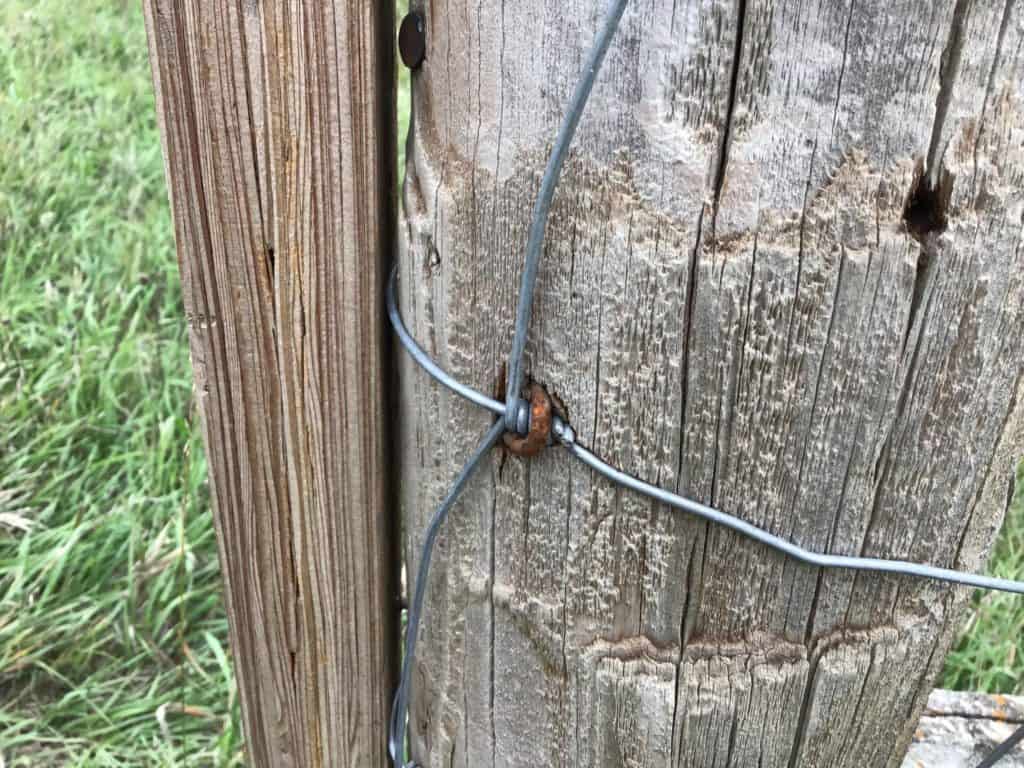
Corner Posts
Even if you are doing woven wire with t-posts, you’ll still want a solid corner post made of something more substantial. What you’ll need for this will vary depending on what type of corner you are putting together.
How to Install Woven Wire Fencing
First, you want to have your corner posts and t-posts in place. Both those could be entire bog posts in themselves so I’ll just leave it at that.
Next, starting with a solid fence corner, attach the free end of your woven wire fence using fence staples. Make sure to staple every single horizontal line. Corners are not the place to get stingy with your staples.
This might sound like a no-brainer, but make sure the larger openings are at the TOP of of your fence and the smaller openings are at the bottom.
Next, using a tractor, pick up, or other solid machinery, begin to unwind the woven wire off the spool.
When you reach the next corner, drive a little past it and pull the fence as taught as you can using either a come along, or the vehicle you are driving. Again, check the video below for how we did this with a tractor.
Using fencing staples, attach the woven wire to this new corner.
Retrace your steps and attach the wire to the t-posts using metal clips.
As an optional step, install a line of hot wire along the top of the woven wire.
Repeat until you have it all fenced!
Looking for more farm content? There’s plenty to explore from goats and cows to gardens and chickens.
Watch
This video isn’t exactly an instructional video but more a “day in the life” of woven wire fencing basics and our fencing project this fall.
Pin it for Later
